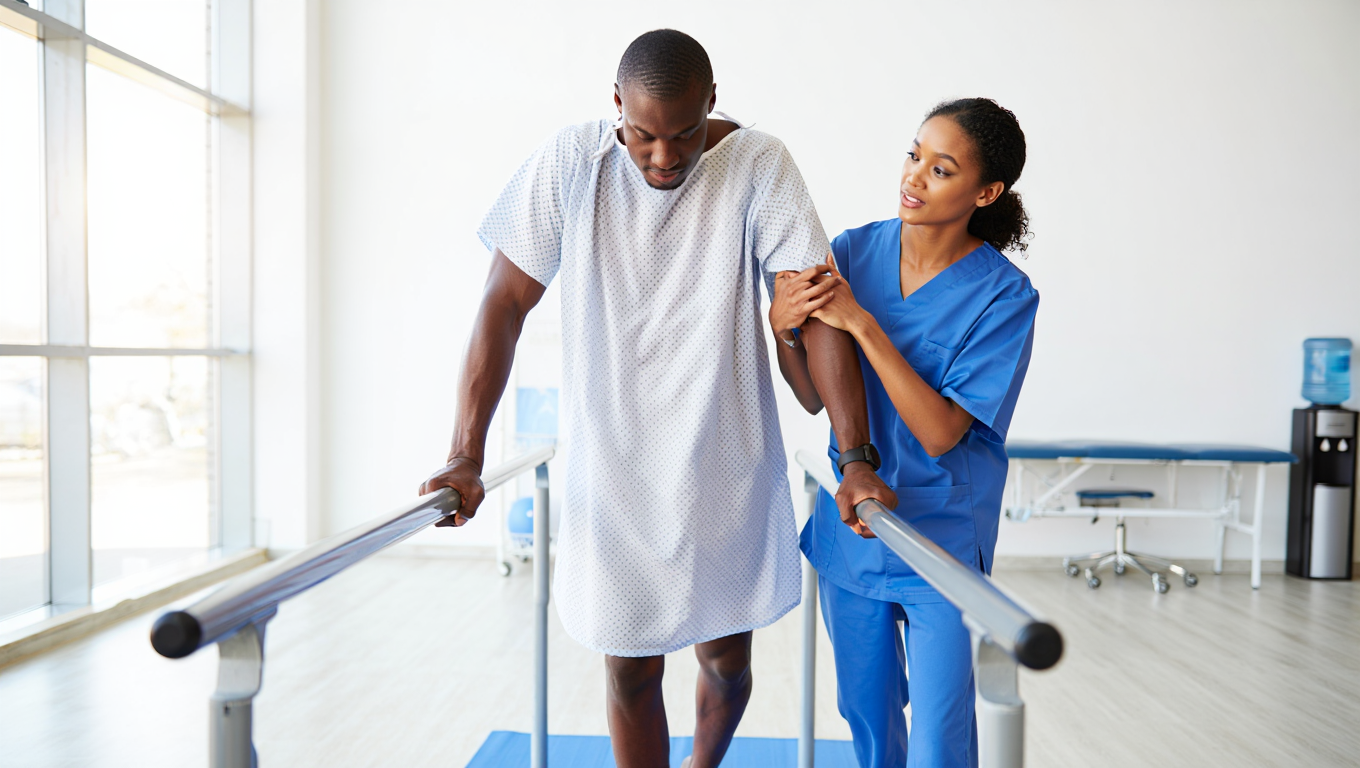Walking Rehabilitation
Understanding the Process, Stages, and Tools for Continued Recovery
Regaining the ability to walk is one of the most important milestones in physical rehabilitation. For individuals recovering from stroke, brain injury, spinal cord injury, or orthopedic procedures, walking rehabilitation plays a vital role in restoring independence, preventing complications, and improving long-term function.
Rehabilitation is not simply about movement—it’s about rebuilding trust in the body, retraining the nervous system, and enabling safe, efficient mobility in real-world conditions.
What Is Walking Rehabilitation?
Walking requires the integration of multiple systems—muscle strength, balance, joint stability, sensory feedback, and coordination. When one or more of these systems is affected, walking becomes impaired.
Rehabilitation focuses on restoring these components through structured, repetitive training. The process typically progresses in carefully defined stages, tailored to the individual's medical condition, functional level, and specific goals.

The Main Stages of Walking Rehabilitation
1. Clinical Evaluation and Planning
The process begins with a comprehensive functional assessment. This includes evaluating joint range of motion, muscle tone and strength, gait patterns, balance, and postural control. From this, a personalized rehabilitation plan is developed, with short- and long-term goals.
2. Foundational Strength and Control
Before walking begins, it’s essential to prepare the body. This includes:
- Core and lower limb strengthening
- Postural alignment and trunk control
- Balance and weight-shifting exercises
- Sensory-motor integration
These elements lay the groundwork for stable, upright movement.
3. Initiation of Gait Training
Once a baseline of control is established, walking practice begins. At this stage, it’s common to use assistive devices or hands-on guidance to ensure safety and promote correct step patterns. Focus areas include:
- Step symmetry
- Foot placement
- Rhythm and coordination
- Gait mechanics (stance, swing, heel strike, toe-off)
4. Advanced Functional Mobility
Progressing beyond basic walking, this stage addresses:
- Turning, stepping over obstacles, and uneven surfaces
- Stair navigation
- Dual-tasking (walking while talking or carrying an object)
- Adapting to real-life environments
5. Transition to Independent Practice
Long-term recovery depends on consistent, ongoing practice. Incorporating walking into daily routines - safely and repetitively -is critical to reinforcing gains and preventing decline.
Tools That Support Recovery at Home
One of the challenges in walking rehabilitation is ensuring patients can continue practicing at home with proper form and safety. Structured walking in the clinic is effective—but progress often slows when practice is inconsistent between sessions.
To address this, tools such as
Just Walk have been developed to bring structured gait training into the home environment. This device is specifically designed to help individuals at different stages of recovery practice walking in a safe, supportive, and repetitive way.
Key benefits include:
- Improved safety during walking, reducing fall risk
- Promotion of correct gait mechanics, reducing compensatory habits
- Encouragement of daily use, increasing the volume of therapeutic walking
- Support for neuroplasticity, which requires frequent repetition
Whether used in early recovery or as a long-term rehabilitation aid, devices like Just Walk provide the structure and consistency that clinical experience shows is essential for real improvement.
Who Benefits From Structured Walking Rehabilitation?
Structured walking rehabilitation is relevant for a wide range of individuals:
- People recovering from stroke
- Patients with traumatic brain or spinal cord injury
- Individuals with multiple sclerosis or cerebral palsy
- Elderly individuals with reduced balance or fall risk
- Post-operative orthopedic patients
Supporting these individuals with the right tools—at the right time—can mean the difference between partial recovery and full reintegration into daily life.
Final Thoughts
Walking rehabilitation is not a one-size-fits-all process. It requires clinical insight, careful progression, and active engagement from the individual. When combined with proper support and tools that enable safe practice beyond the clinic, the path to recovery becomes clearer and more achievable.
To learn how Just Walk can support ongoing gait training at home, visit:
👉 Just Walk by Chaban Medical
Important
This article is for informational purposes only and is not a substitute for professional medical advice; always consult your doctor or physical therapist before starting any exercise or using any device.



